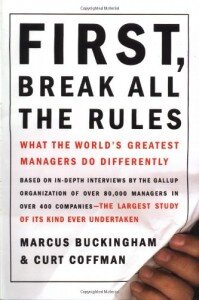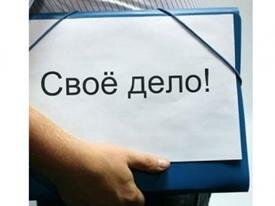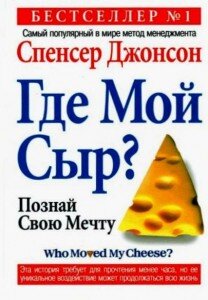Contents

Contrarily, it may be inconvenient and costly to trade assets with a “broad” bid-ask spread, in which the difference between the two prices is significant. Orders to buy or sell stocks are prioritized according to predefined criteria. A market order is placed when the buyer or seller wants the transaction to take place as quickly as feasible. Because of this, you’ll have to settle for whatever the market can provide you. Investors are bidding and offering different quantities and prices of securities.


In most of the advertising in free classifiedss, the lowest selling prices are quoted for the purpose of the trading. Along with the price, ask quote might stipulate the amount of security which is available for selling at the given stated price. The bid-ask spread can be considered a measure of the supply and demand for a particular asset. A bid-ask spread is the difference between the highest price that a buyer is willing to pay for an asset and the lowest price that a seller is willing to accept.
Trailing Stop: How to protect your trades?
As a market order, this means he’s willing to pay the current market price. Thus, the bid price would become $10.05, and the shares are traded until the order is filled. Furthermore, once the 100 shares are traded, the bid will revert to $9.95, as it’s the next highest bid order. So that you might avoid this dilemma, I’d like to run through some important considerations when trading stocks with large bid vs. ask spreads.

Plus we’ll look at some examples and why this matters in your trading. If you’ve ever traded a stock, you’ve seen bid and ask prices. They’re the two stock quote numbers that usually show up in green and red. Posted price is used to describe the price at which buyers or sellers are willing to transact for a particular commodity.
Investing in or trading financial instruments, commodities, or other assets carries a high degree of risk. You should only in trading or investing if you are fully aware of the potential risk of loosing all your deposited money. The bid-ask spread refers to the transaction cost obtained when a stock’s bid price is subtracted from its ask price. If the bid price for a stock is $19 and the ask price for the same stock is $20, then the bid-ask spread for the stock in question is $1. The bid-ask spread can also be stated in percentage terms; it is customarily calculated as a percentage of the lowest sell price or ask price. The depth of the “bids” and the “asks” can have a significant impact on the bid-ask spread.
It executes immediately which can be a great thing if you need to get in or out of a stock as fast as possible. If you’re going to trade stocks, you have to place an order. The bid-ask spread is the price difference between the bid and ask.
The Importance of Supply and Demand
The simplest way to understand the meaning and importance of both these terms is to know the differences between bid vs ask. CFDs are complex instruments and come with a high risk of losing money rapidly due to leverage. 74-89% of retail investor accounts lose money when trading CFDs.
- Traders would watch the bid price, ask price and bid ask spread closely before placing an order.
- Let’s say the buyer wants to buy 100 shares with a market order, then based on the order book above, the order gets executed for 100 shares at $101.00.
- During the middle of the day, stocks are normally much less liquid.
But other buyers and sellers have to fill their orders for this strategy to work. So while I’d rather see you learn to trade penny stocks, if you choose to get into options then educate yourself and study like crazy. That means there’s a large price gap between the bid and ask. So you’ll either be buying high to get in or selling low to get out. Volume is the number of stock shares that trade in a given time frame. I prefer to trade stocks that have higher-than-average volume for the day.
If the buyer increases his bid to the best available asking price of $101.00, the order gets executed. Also, if another seller comes in and sells at market or for a limit of $100.50, then the order gets executed too. A wide bid-ask spread means risky and less liquid securities. When there’s a high spread, trades may not execute as frequently, and if they do, the price can swing quickly if compared to stable securities that move a little bit.
Think of a stock priced at $10 with a 10-cent bid-ask spread. Now think of a stock priced at $1,000 with a $1 spread … The bid-ask is wider in dollar terms but is actually only 0.1% of the price. Hype is generally found in hot sectors or around stocks that are exciting to traders and investors. During the middle of the day, stocks are normally much less liquid. This generally causes the bid-ask spread to be wider in the middle of the day compared to the open and close. Liquidity, also known as trading volume, refers to the number of shares available to buy and sell, as well as the number of shares that have been recently traded.
What Is an Example of a Bid-Ask Spread in Stocks?
Bid and ask is a very important concept that many retail investors overlook when transacting. It is important to note that the current stock price is the price of the last trade – a historical price. On the other hand, the bid and ask are the prices that buyers and sellers are willing to trade at.
Treasury bonds are extremely liquid, so bid-ask spreads tend to be narrow. By contrast, markets for certain corporate bonds are less liquid and carry wider bid-ask spreads. If the current stock is offered at $10.05, a trader might place a limit order to also sell at $10.05 or anywhere above that number. The bid price represents the highest-priced buy order that’s currently available in the market. The ask price is the lowest-priced sell order that’s currently available or the lowest price that someone is willing to sell at.

It is best to pick a broker with zero or low spreads, to keep trading costs at a minimum. It is also possible to place bets on spreads, but not all brokers allow spread betting. Oftentimes, there is a spread between the bid and ask in the marketplace. This is the difference between the amount quoted by the buyer and seller for the purchase and sale of stock.
These https://business-oppurtunities.com/rs attempt to buy a security on the bid and sell it on the ask, taking advantage of the spread. The ask size is the number of shares a seller is willing to sell at the ask price. The higher the ask size, the more shares that are available from traders who want to sell at that price.
Bid-Ask Spread
That’s where the Breaking News Chat tool on the StocksToTrade platform comes in. Two of the stocks have news — there are some hot news catalysts. Great sign … but now Sarah has to decide which stock is best to trade. Whenever you enter or exit a trade, the bid-ask spread will play a role.
Beispiele für Bid, Ask und Spread
Let’s take a look at what happened to the bid-ask spreads for at-the-money SPY options during that period. Clearly not all options are created equal and some stocks will have better option spreads than others. Next, we’ll compare some options on a highly liquid ETF and a less liquid stock . MSFT is another highly liquid stock and the spreads there are very good also at only $0.21 or about 0.09%. The bid-ask spread can give you a powerful yet simple advantage in trading stocks.